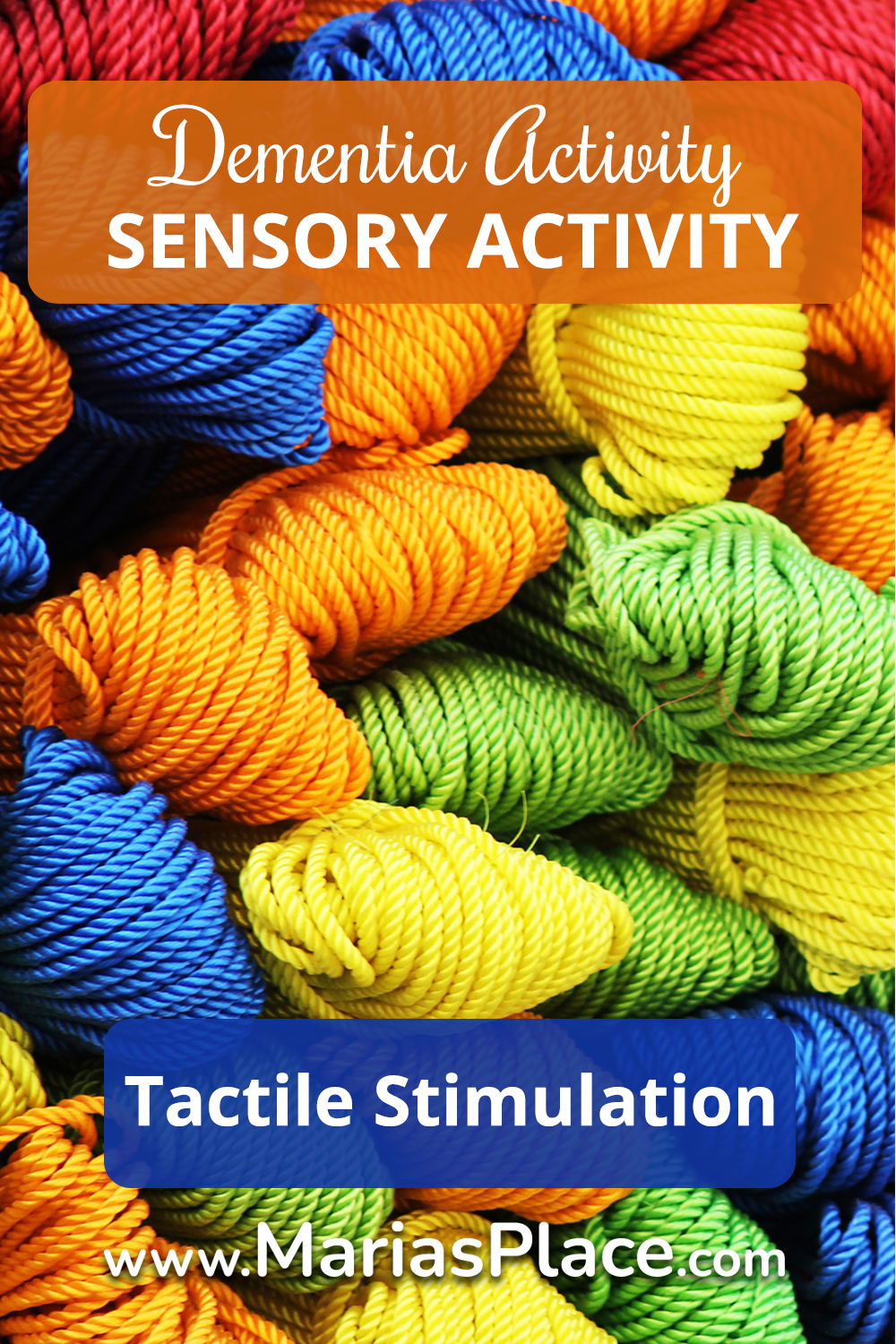Abrasive, slippery, bendable, cold, furry, soft, dry, wet, feathery, rough, hard, sticky, prickly, silky, wooden.
These are all different words to describe types of texture.
We all touch and feel within our environment daily without really thinking about it; the texture of soft slippers on our feet, the touch of a feather to our face, holding someone's hand, etc.
As a caregiver, you could have a texture activity session, either with an individual or a group, as a more social exercise. Bring objects such as a sponge, fabric and carpet samples, various fruits, something from the garden, see what is in your kitchen drawers. Touch and discuss the objects, maybe close the eyes for a more intense experience.
Sensory activities can also be a great mental exercise.
Ask the participant(s) to describe an item—the texture, shape, color, weight, height, etc. A feather, for example, can be soft, feathery, yellow, beautiful, 4" long, have a hard stem, be light, feel ticklish, etc. A fun exercise with unlimited possibilities.
Tactile stimulation can be active or passive. Being the recipient of a hand, foot, head, shoulder, neck, or other types of massage can be a lovely experience. You don't have to be a professional to deliver a hand massage; gently rubbing some favorite hand cream into a person's hands or feet is an excellent way to offer a feel-good experience. It is also a nice opportunity for social contact. Be aware that our skin becomes thinner as we age, and a gentle touch is advised as the skin can break.
Touch can give rise to many different emotions; comfort, nostalgia, happiness, and so on. It is an excellent activity for dementia as it can be used in all different stages of this condition. In the earlier stages, tactile activities can be used as active engagements as described above. In the latter stages of Alzheimer's disease or other dementias, personal touch like holding hands, a soft blanket, or a stuffed animal may provide comfort and engagement. Depending on the object, it can also be a passive exercise for hands in later-stage memory care.
Maria
More about texture in the post "Rummage Bag" if you would like another example of a sensory activites.






